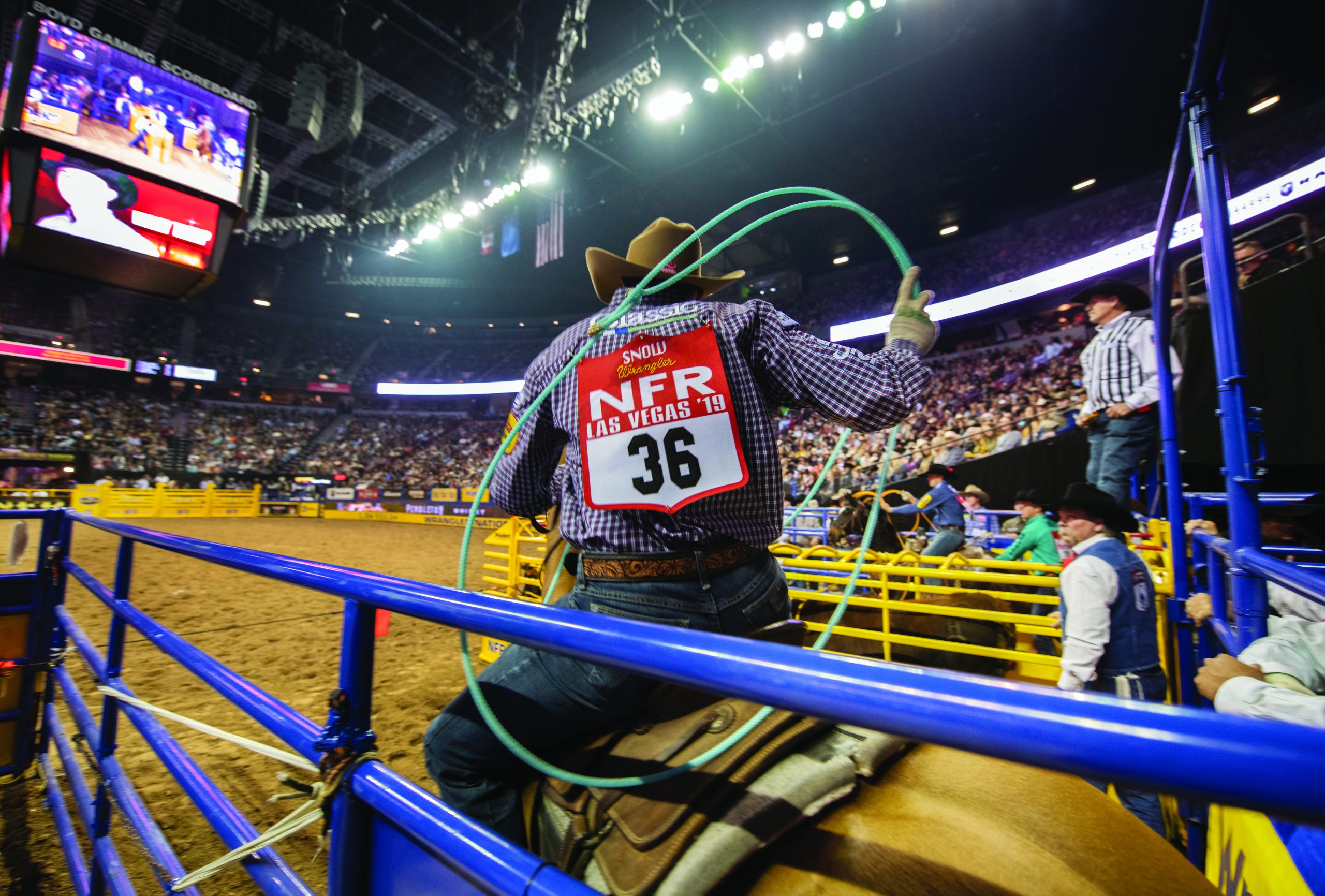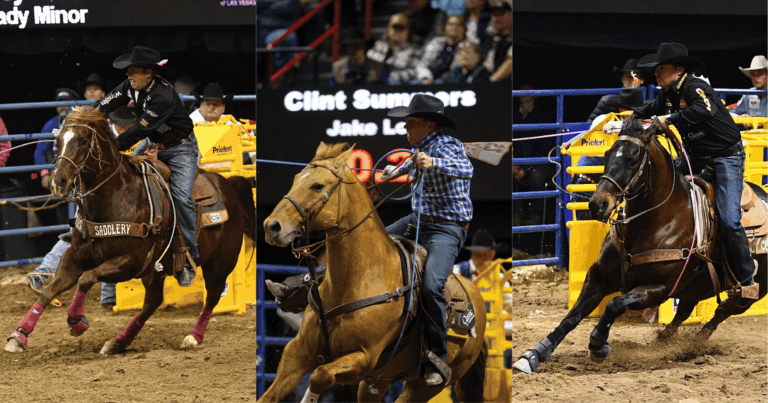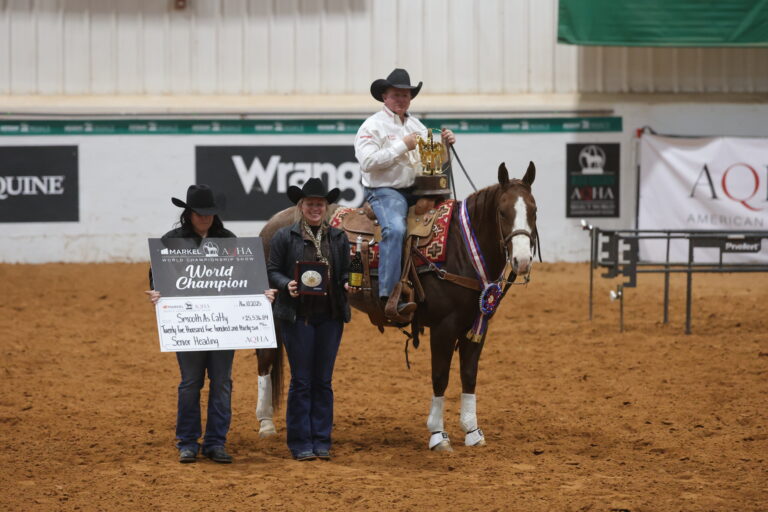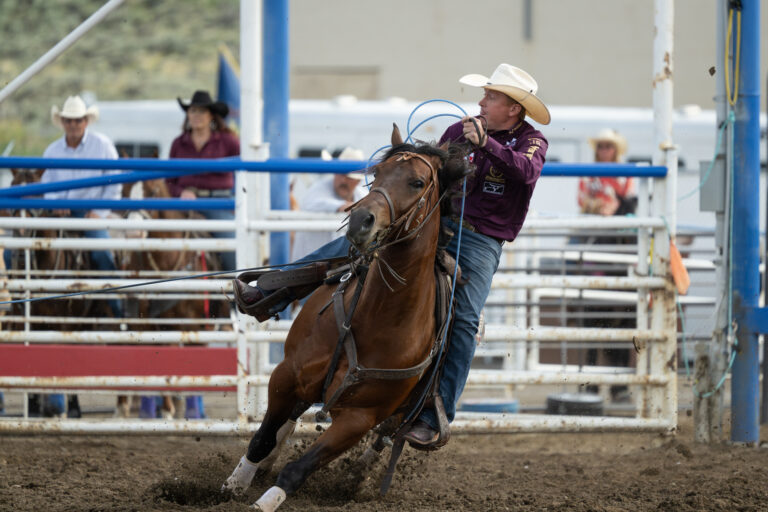Granted, California’s Cody Snow ropes well.
But he scored so perfectly at the 2019 Wrangler NFR that he won the average by 13 seconds. He scored so perfectly in Round 7 that he clocked the fast time of the entire Finals. He scored so perfectly in Round 10 that his partner, Wesley Thorp, dallied on the gold heeling buckle. Afterward, Snow immediately split the win at Denver with Paul Eaves.
“The biggest key to winning is getting a good start,” said Snow, who lays all those barriers back aboard a 12-year-old buckskin mare he calls Annie—registered as Ima Fresnos Dee—he trained himself.
[Read: Cody Snow’s Annie Comes Back Strong]
How does he make it look so easy? What’s Snow doing with his body in the corner to make that mare leave so fluid, with such perfect timing, wearing only a three-piece snaffle bit?
[Read: Bit Pick with Cody Snow]
Here, Snow and some Hall-of-Fame horsemen offer the nitty-gritty on just what happens with their left hand and body as they nod for a steer.
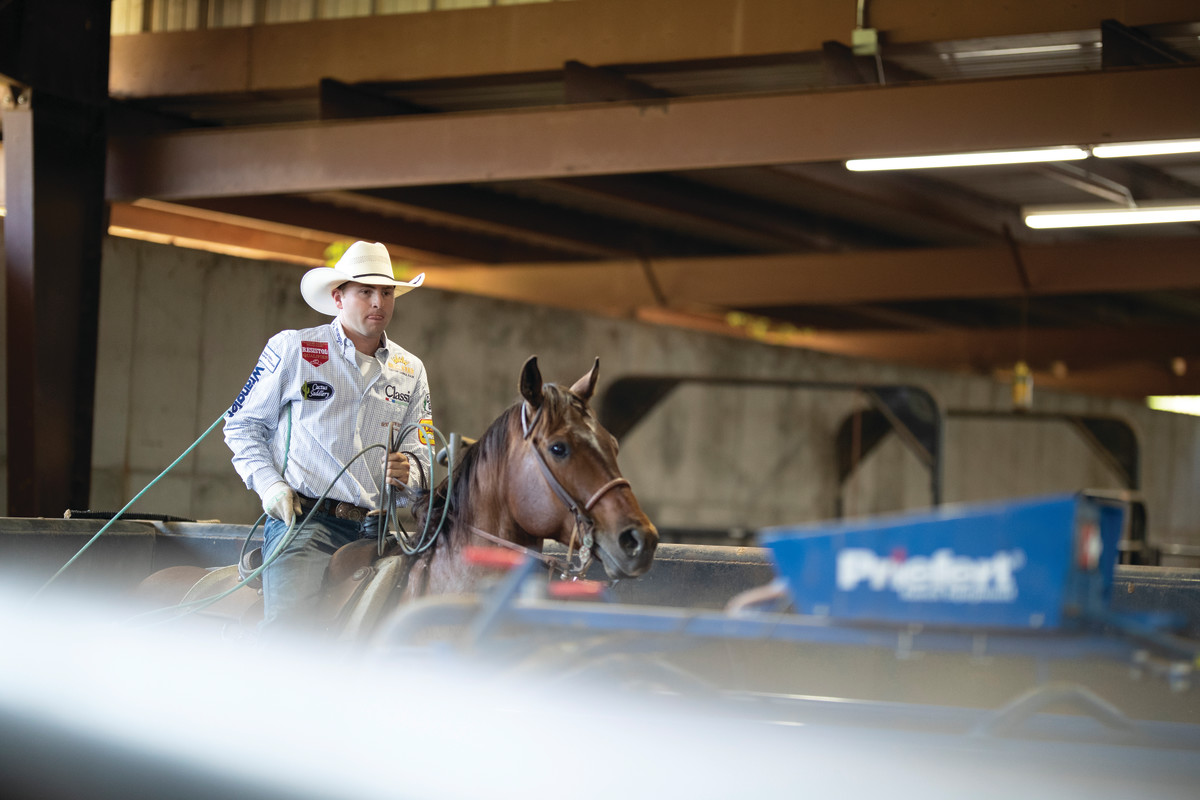
A straight face
Two-time world champion header John Miller revealed the first secret in his expansive Arizona arena. He was helping a snowbird whose head horse had started running through the throw.
Miller, an inductee of both the National Cowboy and ProRodeo Halls of Fame, was so accurate roping the bones that he landed in the top five in the world most of 1967 to 1972, amassing back-to-back gold buckles and an NFR average title in a separate year. But it was the native Oklahoman’s prowess aboard jam-up rope horses that earned him an AQHA world title and got him the job training for Ed Gaylord back before the Lazy E Arena was built. The bay colt he’s finishing now—a Driftwood Ike-bred gelding that came from fellow NFR header Joe Murray—is big-time.
That day in December, Miller suggested his visitor shorten the tie-down and go back to positioning fundamentals. It worked. But his real mind-blowing tip had nothing to do with rate.
“Let me show you something,” he said the next time the student backed in. “Use your right rein and tip his nose just a little to the right, there in the corner. Then nod.”
When the student walked the horse back after the run, Miller asked, grinning, “Did he leave a little cleaner?” The difference was plain. The horse never had noticeable issues leaving the box, but this time, after the nod, there was no stutter, no flinch or wiggle; no nothing but pure, clean forward motion.
Renowned trainer in 21-time NFR team roper J.D. Yates, just back to the States from teaching roping in the Dominican Republic gave some perspective on how this tiny trick could make such a difference.
“I never score one straight ahead unless it’s a really short score,” Yates admitted. “A horse’s eyes are on the sides of its head. I use less tension on the reins and let them look off. They break straight anyway.”
[Read: One on One with JD Yates]
While Yates and every other winner spoken to does things a bit differently, each emphasized that every horse is different and requires a different hold in the corner.
“I don’t like to hold one real tight in there,” Yates said. “Some horses need it tighter than others. It’s however they want it. Most of the time, I kind of let them tell me how they like to score; how much tension they need on the reins. You know it’s too much if they start coming up or if they rock back when the gates clang. You know it’s not enough if they start leaking forward. The more you rope on them, the more you know how much to pull.”
[Read: Eliminate Wasted Motion with Cody Snow]
Tension techniques
That would explain why Snow and the mare he started as a 4-year-old are so in tune. He wants her to want to stand in the corner; not to feel trapped.
“In the corner, if I put my hand down, I don’t want one to run out,” Snow explained. “We’re going to pull on our horse at a rodeo. So at home, I give her confidence that I’m not going to pick up on her.”
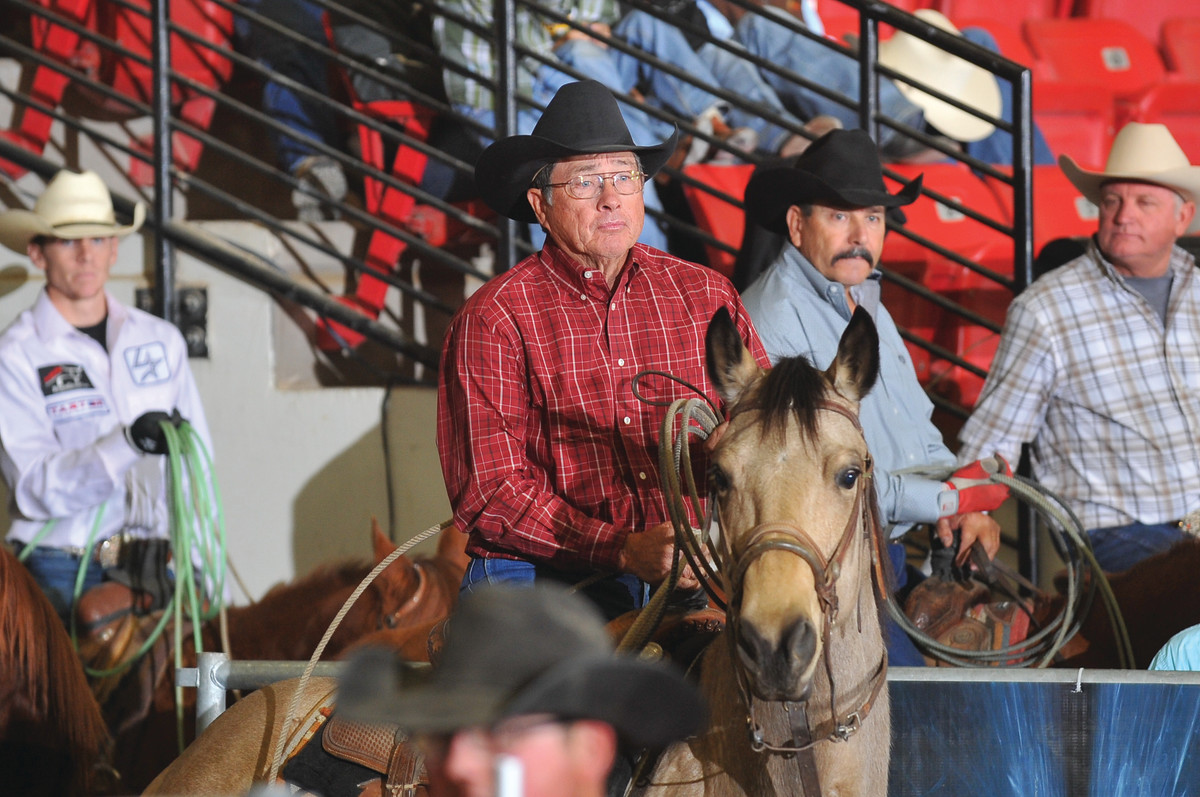
Snow scores with light tension—barely enough to keep the rein snaps from hanging straight down. That way, she can feel the tension, but it’s not so much that she needs to find a safe spot, he says. But Snow’s biggest key has been to keep his legs relaxed.
“When the gates crack, your instinct is to tense up, but that’s a cue to your horse even if your left hand doesn’t do anything,” Snow said. “I try to practice being able to stay relaxed, so it becomes muscle memory.”
Snow enjoys making head horses almost more than he does roping. The same is likely true of Miller, whose horses are known for leaving the corner so hard they feel shot out of a cannon. He uses the opposite tension technique as Snow. It’s not a white-knuckled hold, but a firm enough hold that a horse is leaning into his reins until the release.
Finally, he explained the physics behind that old gelding’s crazy-clean start that day.
[Read: J.D. Yates’ Hackamore Secrets]
“It’s about a horse’s comfort zone,” Miller said. “That comfort zone is part of what you’ve got to find in every horse. How would you get set up to start a race? Would you just stand there facing straight ahead, flat-footed? We all have a lead. You set up your horse’s left lead by tipping his nose just a touch to the inside. It’s a comfort thing for them. Works on damn near all of them.”
What so many of us inadvertently do, he said, is ask a horse to step to the right leaving the corner, but pull the head to the left. Those are conflicting signals. You’re not letting a horse relax.
“People want the face straight ahead in there, but I let them tip their nose a little to the right because straight, for me, doesn’t work on very many of my horses,” he said. “I let the horse tell me where his comfort zone is, and I try to improve on it.”
Then, what the heck had that old finished horse been doing between the nod and the start, anyway?
“He had to move his feet to start,” Miller explained. “He had to take a step one way or the other. With his nose tipped, you’ve already got that step made for him.”
[Read: Scoring Tips from Jake Barnes]
Not only does that make sense to me, but so does Miller’s confession that he usually rides a head horse with a little shorter right rein than left.
“By doing that, as the horse runs to the cow, he doesn’t have that right shoulder out in front of him and his nose to the left,” explained Miller. “He has his nose to the inside or in front of him.”
Sounds like an advantage, too, when you want to encourage younger horses to take that left lead every time.
From the horse’s mouth
Another two-time world champ out of Arizona, Matt Sherwood, said he also uses quite a bit of rein tension (depending on the horse) during his nod. His key is not to change that tension at all from the moment he nods to the moment he releases. That’s how his excellent-scoring sibling sorrels wait for him to release before taking off.
“I have no pressure at all on my reins until everything’s right,” he said. “Then I apply that horse’s right amount of tension and maintain that all the way until the departure.”
Top-20 PRCA header Paul David Tierney was raised by Hall-of-Fame world all-around champ Paul Tierney, a man who scored great in every box of the arena, and he has plenty of experience himself training for Paul Tierney Performance Horses out of Oral, South Dakota.
[Read: Scoring on a New Head Horse]
Like Sherwood, young Tierney only applies the tension as he nods. He has everything ready (the rope and his reins) when he backs into the corner and doesn’t change a thing, keeping his body calm and staying square in his stirrups.
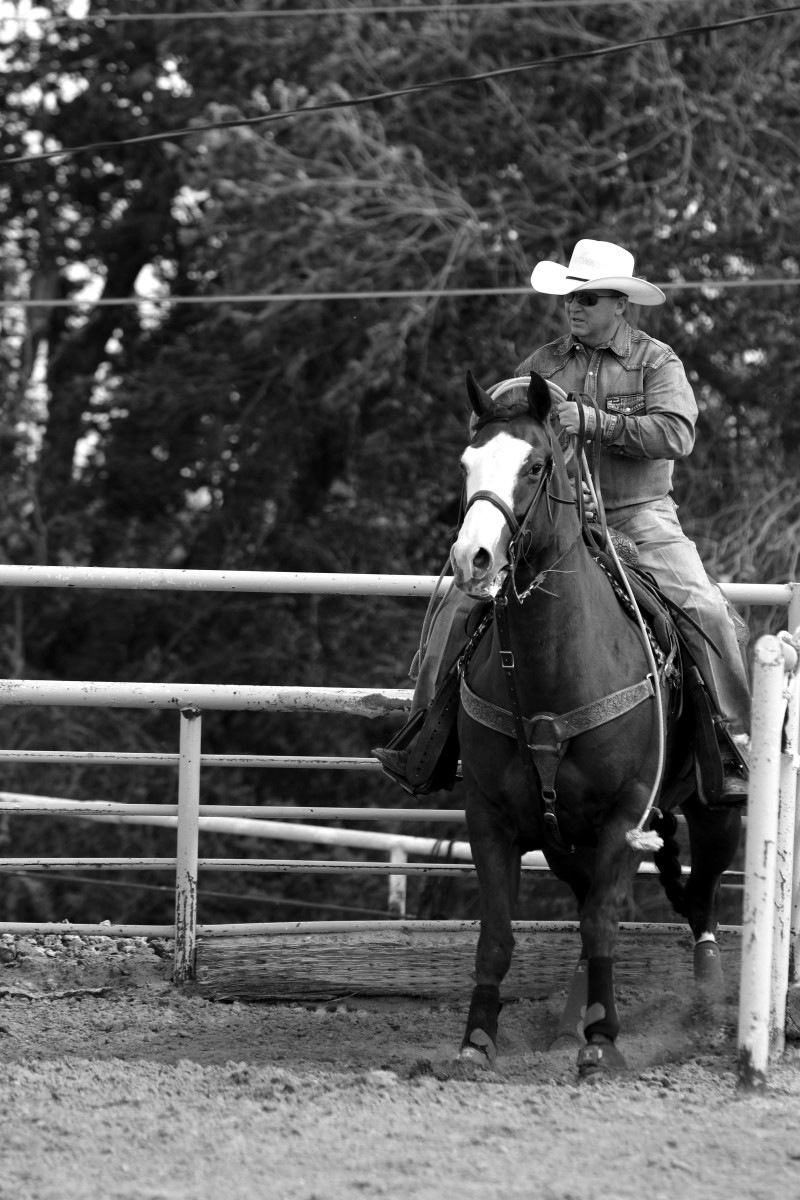
“My backup horse needs a stronger hold than my good horse,” Tierney said. “I will have a little tension already, and then I firm it up when I nod, depending on the horse.”
Like Sherwood, he prefers his horses look straight ahead and depart through the center of the box or just left of center. By “square in the stirrups,” Tierney means equal weight on both seat bones and not pushing forward with one hip or the other.
“I never want one to go as fast as they can from the corner,” Tierney added. “I want my horse to hit the mouth of the box and then go as fast as he can go. Practicing that way, I think they stay more relaxed in the corner and score better. If they’re relaxed and I’m relaxed, then we can go when we want.”
Tierney jokes that he’s not proficient behind World Series starts because he’s not as brave as other people. A scoreline based strictly on the steer means responding to what the steer does when the gates open—more like a bulldogging start, he says.
Regarding the left hand, every header asked splits their roping reins with one or two fingers. Yates likes to hold his reins within about a five-inch window above his saddle horn, so he can pull over it if necessary, but below his chest. For body weight and tension, he tries to keep his toes down and stay at the front of his saddle. He agrees that a calm body begets a calm horse.
[Read: Scoring: A Key component of Success at Every Level]
“Sometimes a horse needs me to be more relaxed in the corner, but I don’t want him to leave me in the box,” Yates said. “If you don’t keep a good center of gravity, it’s not going to go very well.”
Obviously, the pros each start their horses a bit differently. But one aspect of scoring is agreed upon by every single Hall-of-Fame-caliber header. You have to find each individual horse’s comfort zone and respond accordingly in that all-important moment between the bottom of your nod and that first stride away from the corner.
“If a horse is letting you win, you need to adjust to what he likes,” Yates said.
Case in point? Annie—the buckskin mare that lets Cody Snow win every time he nods.




